In the thousands of frozen images of Michael Jordan stilled while in mid-air during berserk NBA nights or in predatory moments on the basketball court; of the millions of words spoken and written in the fruitless attempt to explain what it was that made him such a hypnotic force-field of an athlete, very little attention has been paid to what is the essence of the man's physical appearance.
That mouth.
Jordan has the best American lip-curl since Elvis Presley first appeared like a fuzzy black and white apparition on the Ed Sullivan show in 1956. And his mouth provided what became the signature for those swooping, unearthly drives to the basket, always open and the tongue always out, a characteristic he inherited from his late father James.
Plus, Jordan never shut up. He was always jawing: at opponents, at referees, at team-mates, at the old slights from his youth which he nursed and cherished and would later unveil during what was a funny, strange and bittersweet Hall of Fame speech. He made sport out of taunting people. He has a sharp tongue and as the master of his sporting realm enjoyed demoralising and crushing lesser opponents.
And for the bones of a decade, everyone in the world was a lesser opponent. If he wasn’t yapping or pouting, during breaks in play, then he stood still, hands on hips, slouchy and regal, and chewed gum in a methodical, exaggerated way to make it clear that he was contemplating how he would choose to ruin whatever opponent, whatever team, he happened to face when he next got the ball.
He knew the camera was on him because game directors loathed ever not showing him. And then every so often, when it felt, as it often did, that the world was marching to his tune, that mouth would transform his face into a smile that could have powered the electrical grid of greater Chicago during the 1990s, when he was an athletic god not just in the Windy City but all of America. And in those moments, he was all charm.
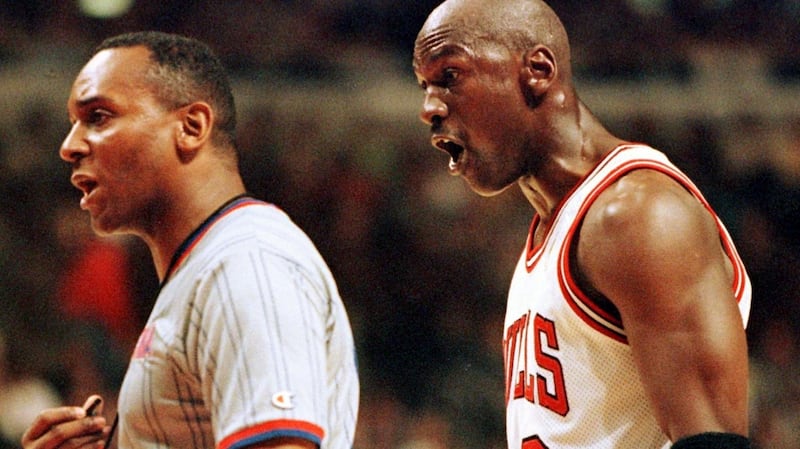
Many millions of people are going to see all of that for themselves over the next five weeks with the broadcast, on ESPN and Netflix, of the 10-part documentary The Last Dance. It's a staggeringly in-depth proposal: 10 episodes, directed by Jason Hehir, to be broadcast the old way: in tantalising week-by-week format. Only for Jordan could the fates align in such a way that the definitive documentary on his life be aired during a freakish, unparalleled moment in history when the world is effectively locked indoors and people have more time than ever to watch shows. Of course Jordan would say he wishes it didn't have to be like this but privately, he probably quietly approves.
The Last Dance is notionally a slow burning study of the 1997-98 season of the Chicago Bulls, when the NBA Entertainment film crew was given season-long behind-the-scenes access, resulting in over 10,000 hours of never-seen archive material. But it’s essentially about Michael Jordan, 1998 was the sixth and final of Jordan’s NBA titles with the Bulls: he retired – for the second time – afterwards and the team broke up.
Hehir conducted over 100 interviews for the documentary, including sit-downs with Bill Clinton (who spoke about Jordan's wing man Scottie Pippen) and Obama, who puts Jordan's importance to Chicago in context. Jordan himself even consented to talk, sitting down in June 2018, May 2019 and last Christmas to talk about his life before and during that season. And he was reluctant.
Jordan is 57-years-old now. He has a razor sharp memory for moments and he knows better than anyone how terrible his behaviour looks in hindsight; the hectoring, the goading, the cruel delight in humiliating very, very brilliant athletes and ball-players who just couldn’t quite reach his frequency and the demonic burning competitiveness which he claims is something he owns but which, one suspects, actually owns him.
So Jordan was reluctant and confessed his reason: that when people see the footage of how he acted and verbally abused team-mates in training, they would just see a tyrant, in particular his treatment of one player, Scotty Burrell.
“When you see footage of it,” he told Hehir, “you’re going to think I’m a horrible guy.”
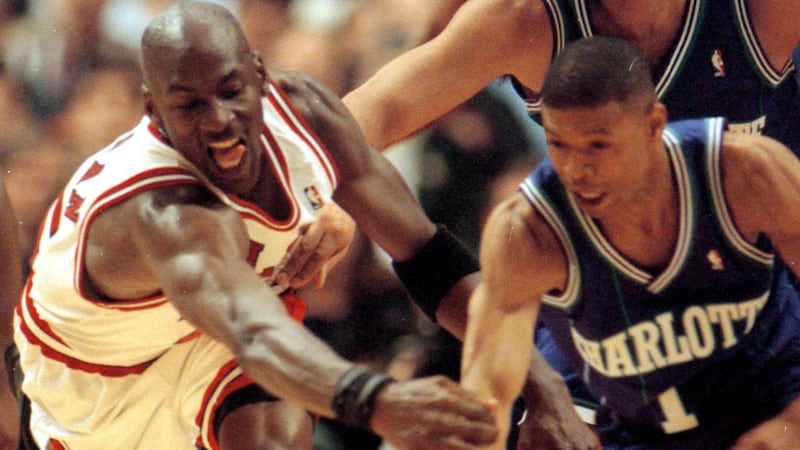
Instances of Jordan’s mean streak are manifold: the nastiest moment may have been when he taunted an opposition player, Muggsy Bogues, a phenomenal athlete who at 5’3” was the smallest player to ever make the NBA, with the words “shoot it, you midget.”
Johnny Bach, an assistant coach at the Bulls whom Jordan revered later said that Bogues had told him that the insult broke something in him and stats showed that he was never the same player again. But then, Jordan's reign coincided with an era when poisonous trash talking was the currency of the NBA.
Jordan could be hateful but could also be kind and generous and, as NBA commissioner David Stern would point out, he was a marketing dream: "A very handsome, friendly, essentially decent human being." Before he entered the league, it was financially troubled and scandal-plagued. By the time he left, the NBA had been transformed and Jordan was the single biggest marketing phenomenon the world had seen. The Bulls' arena in Chicago sold out for every one of Jordan's home game from November 1987 until he retired.
Still, for the non-initiated, a 10-part deep dive into a 22-year-old basketball season may seem like overkill. After all, Ken Burns managed to do a pretty good job of chronicling the American Civil War in just nine episodes. More recently, he gave Vietnam a similar treatment in 10 hours. If Ezra Adelman's epic documentary OJ Simpson: Made in America ran to almost eight hours, it also covered four decades of race relations in Los Angeles, the first true television show trial and one of the most macabre falls from grace the country had witnessed.
All that Michael Jordan really did, at least on the surface, was play basketball in a way nobody has done before or since – and then leave. He merged aesthetics with inner fury and it was captured in that iconic silhouette logo. One of the great contradictions about Jordan was that for all of his burning certainty and self-belief, he was never quite the master of his own destiny when it came to basketball.
He retired for the first time after winning three consecutive championships with the Bulls (1991-93) in a vain attempt to pursue a life in Major League Baseball, an exit that occurred just months after his father had been murdered in a robbery while he slept in his car.
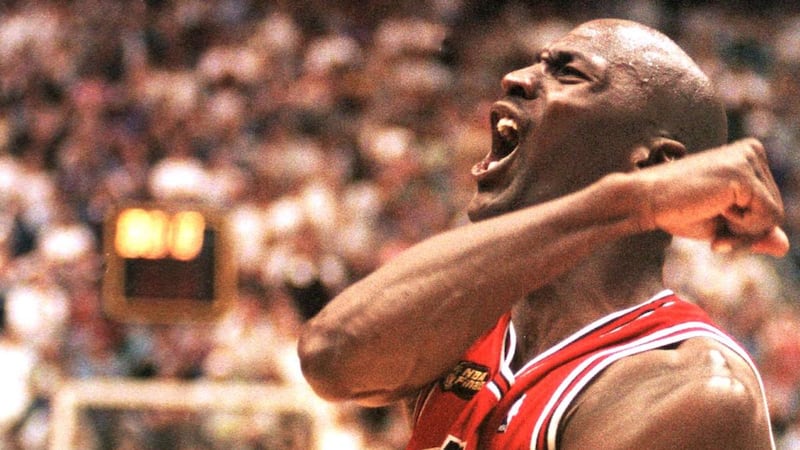
For the season and a half of his absence, the NBA tried to get on with things but it was like the Rolling Stones touring and pretending Mick Jagger not being on stage was no big thing. Jordan returned midway through the 1995 season – he had his agent send out a fax with a two-word declaration: I'm Back. The Bulls swept all-comers for another three seasons.
And in 2001, in the wake of 9/11, he made a third comeback, this time with the Washington Wizards when his body was beginning to become mortal and which felt forced and even a little desperate from the beginning.
In 2013, ESPN’s Wright Thompson wrote a haunting profile of Jordan at the age of 50 , which captured the billionaire living the pleasure life and ostensibly happy but nonetheless quietly tormented by the fact that in the 10 years since he left, basketball has gone on without him.
There's an unforgettable scene when Jordan is sitting late at night with his friend Quin Buckner watching a Heat-Jazz game. "What's Bird up to?" he asks of Larry Bird, the Boston Celtics assassin of the 1980s. "Bored," Buckner answers. And so is Jordan, beyond wealthy but despite having retired twice from the game unable to fully leave it.
“I would give up everything now to be able to go back and play the game of basketball,” he says at one point.
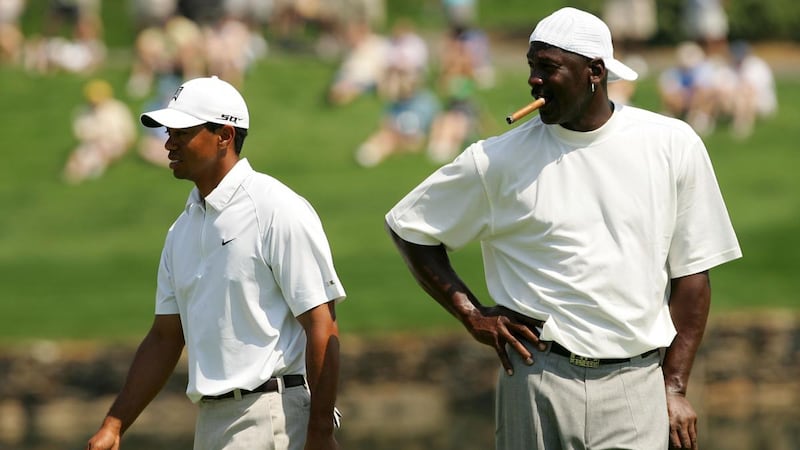
And that may be the essential point of this film. If anyone wants to relive the majesty of Jordan, there is a trove of material available just a Google click away. Football is the biggest sport on earth and Zinedine Zidane was its most original and beautiful conduit for the possibilities of football when Jordan was playing basketball. But when told, in 1999, that he had topped Jordan in a poll in France as the world's greatest athlete, the French man replied: "I'm not even on the same planet with Michael Jordan. Get serious."
Zidane was a genius who recognises genius. There’s no point in rhapsodising about what Jordan could do against other human beings with a basketball: it has to be seen to be disbelieved.
It's what Jordan represented in his prime that is fascinating now. 1998 was a year of rampant economic optimism in America. Unemployment fell below 4.3 per cent for the first time since 1970. The Dow Jones set a new record high. It was the year that two Stanford graduates set up a new search engine, Google, in Palo Alto. Frank Sinatra died that May. Bombings of US embassies occurred in three different countries with Osama bin Laden believed to be the architect.
And it was the year when Monica Lewinsky appeared before a grand jury and would conclude with the impeachment of Bill Clinton as America plunged into what Philip Roth termed "the ecstasy of sanctimony" in his novel The Human Stain.
“It was the summer in America when the nausea returned, when the joking didn’t stop. . .” That was the country and that was the mood which Jordan had as his stage setting in his final year as an unconquerable icon.
So what makes it interesting is the passage of time. What promises to make The Last Dance such a strange and compelling experience is that it is being broadcast during a unique moment, when a virus that is as ridiculous as it is dangerous has effectively stalled the world’s commerce and machinery. International society has consciously halted its own progress: all the streets of the great cities empty, the skies free of aircraft, stock markets in free fall, everyone under self-imposed curfew at night time. So there has been no real choice to look back, particularly in the realm of sport where nostalgia and fixed transcendent moments have always held a mass appeal.
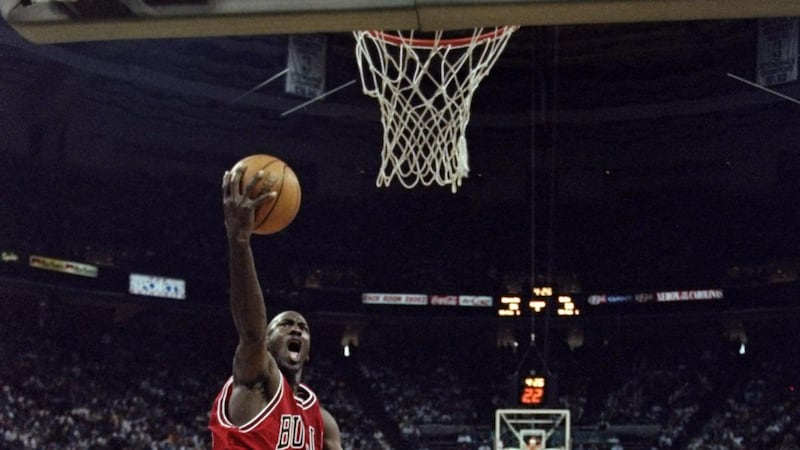
How strange it will be for everyone who remembers Jordan in his prime, but in particular for those who saw him play in the flesh. Three years before 9/11, a full decade before the global worldwide recession caused by all that giddy optimism and 20 years before the ghoulish spectacle of Donald Trump haranguing the world over a weird and deadly virus, America gets to sit down and turn back the clock to a more optimistic time.
There is a strong argument to be made that the NBA has never really recovered from the meteor-hitting-earth impression that Jordan made on the game and on society. Everything that happened afterwards has sometimes been brilliant and often thrilling but somehow paler, too: no individual player has ever come close to generating quite the same level of dangerous theatre as Jordan did.
When it was announced that ESPN had brought The Last Dance forward from June to give people something to watch, among those to trumpet their joy was LeBron James, the only real contender to Jordan’s place as the best the game has seen.
“April 19th cannot come fast enough,” he wrote on Twitter. “I cannot wait.”
James will be watching on with the millions around the world. It’s still Jordan’s game.
Episode One of The Last Dance will be broadcast on ESPN on Sunday, April 19th and Netflix on Monday, April 20th.




















